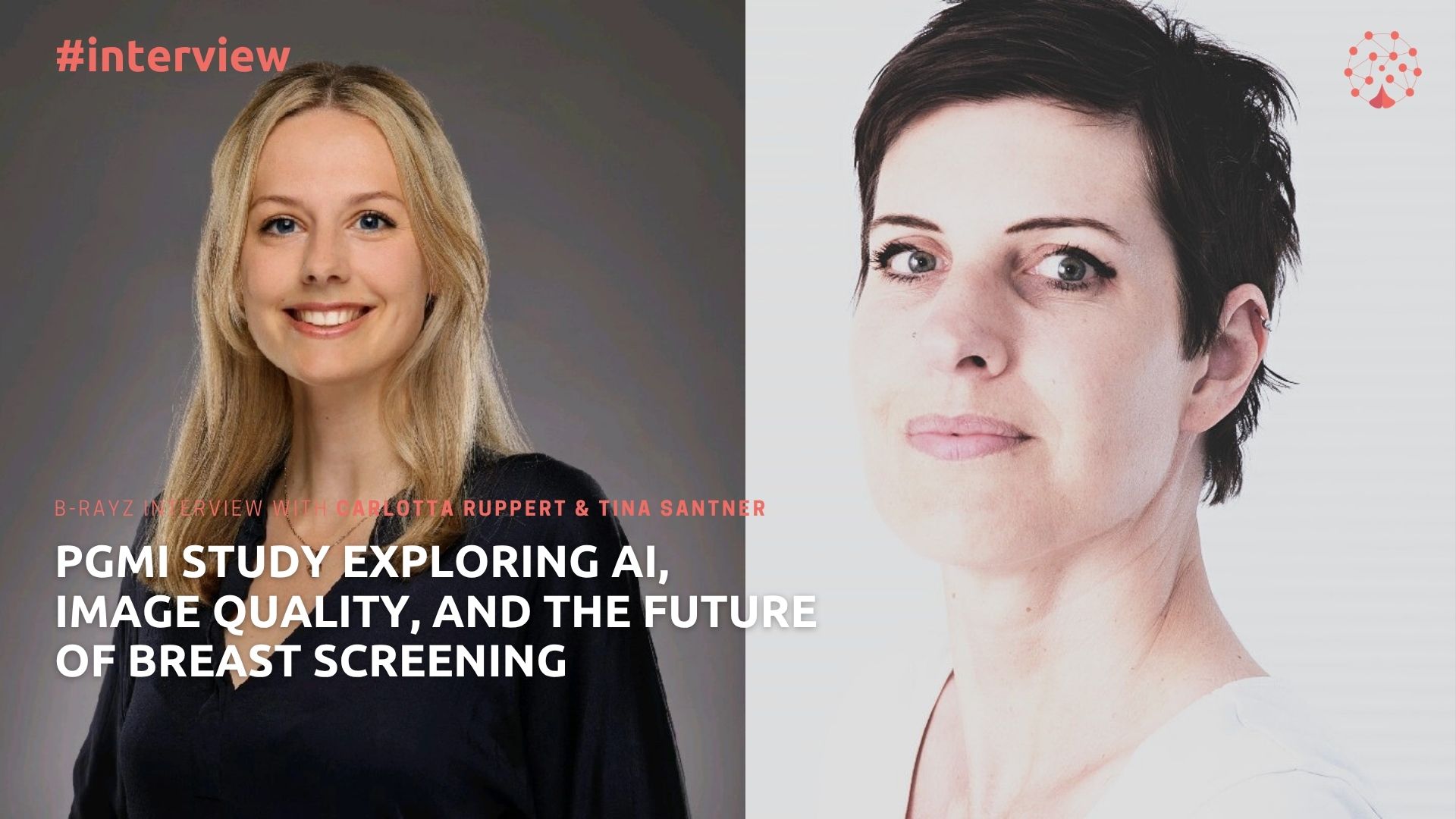In recent decades, breast cancer research has made groundbreaking progress: Breast cancer can now be detected ever earlier, and treated in a much more targeted way. As a result, this cancer has lost much of its former power to threaten – though it is still a serious opponent. Here is an overview of the fascinating history of breast cancer research, ranging from the ancient belief in the four humors, to a modern, tailored oncological approach.
Breast cancer: Known and feared since ancient times
Breast cancer is the oldest-known cancer. Records of the disease go back as far as Ancient Egypt (2650 BC), when it was thought to be incurable. There is a simple reason for why breast cancer, of all cancers, has been known to humans for so long: tumors present in the female breast are palpable and – in later stages – also externally visible.
Hippocrates (460 BC) was also intently interested in breast cancer as part of the ancient belief in the four humors. He suspected that the cause was an excess of black bile – possibly due to the dark discolorations that often result from bleeding in the cancer’s advanced stages. Since the ulcers appeared to anchor themselves in the tissue in a crab-like way, he dubbed them “karkinos” (crab or cancer). Thus, the modern term for malignant tumors was born. In his day, Hippocrates advised against treatment because of the poor prognosis.
Breast cancer treatments: Brutality through the ages
Other ancient healers did attempt forms of treatment. Some tried to treat breast cancer with ointments made of insect feces or sulfur. Some even tried to burn the cancer away with hot objects. Despite the fact that there was no sophisticated form of anesthesia or disinfectants, in certain cases surgery was attempted. For many centuries, the only chance of survival lay in removing the cancer as radically as possible with a knife or scalpel. Of course, this only had moderate success: many women died of gangrene, while others – understandably – refused treatment.
It wasn’t until 1867 that Glasgow physician Joseph Lister (1827-1912) performed the first mastectomy under general anesthesia. The patient, his own sister, died of liver metastases three years later. Sometime later, the American surgeon William S. Halsted (1852-1922) developed on this surgical method, performing a maximum radical mastectomy: along with the mammary gland and pectoral muscle, he also removed the surrounding lymph node area. This method increased the 3-year survival rate from just under 5% to 42%. However, many patients struggled with serious physical limitations after the procedure.
At the end of the 19th century, a Scottish surgeon named George T. Beatson (1848-1933) made an exciting discovery that would advance breast cancer research. He found that surgically removing the ovaries led to remissions in breast cancer for many of his patients – though not all. Through this method, he had grasped how breast cancer is dependent on hormones, though the root causes still remained a mystery.
Breast cancer research in the 20th century: The dawn of a new era
Finally, the 20th century brought decisive breakthroughs in breast cancer research. Scientists were beginning to understand the causes of cancer and the principle of metastasis, leading to the development of more effective treatments. A significant milestone in the fight against breast cancer was the introduction of early detection methods through advances in X-ray technology.
Surgical care: Less is more
Halsted’s method of radical mastectomy was based on the notion that breast cancer spreads centrifugally from its site of origin via soft tissues and lymphatic channels. As early as the 1930s, surgeons such as David H. Patey (1899-1977) were firm advocates for less radical surgery that didn’t involve the removal of the pectoral muscle. Nevertheless, for a long time, mastectomy remained the standard form of surgical treatment for breast carcinoma.
This didn’t change until the 1970s, when large-scale studies proved the safety of less radical methods. Instrumental to this research was a working group led by US surgeon Bernard Fisher (1918-2019), then responsible for the National Surgical Adjuvant Breast Project (NSABP). Methodologically advanced for its time, this project shaped modern breast cancer research for many decades to come.
Via experimental (prospectively randomized) studies, the research team was able to show that when treating smaller tumors, breast-conserving surgical procedures, followed by radiation, is just as effective as mastectomy. The NSABP studies were also the originators of the sentinel lymph node concept, which later became the standard in surgical breast cancer care. This cites that if the sentinel lymph node in the axilla is tumor-free, then there is no need for the precautionary removal of downstream lymph nodes.
Better treatment outcomes through adjuvant therapies
Bernard Fisher and his team also viewed the early stages of breast cancer to be a local disease that later spreads throughout the body – not just via the lymphatic channels, but also through the bloodstream. It would take longer before breast cancer researchers would fully understand the details of metastasis. However, Fisher’s new systemic view led to a breakthrough in adjuvant therapies. In the 1960s and 70s, these were mainly limited to chemo- and radiotherapy. These new adjuvant therapies breast cancer treatment were more effective than ever before. Even today, chemo- and radiotherapy are considered effective weapons against cancer. Thanks to newer preparations and more sophisticated therapy regimens, patients are more able to tolerate them today than in their early days. Yet, despite their effectiveness, chemotherapy and radiotherapy do not specifically target tumor cells.
Mammograms and the rise of early detection methods
Despite improved treatment methods, breast cancer remained a highly fatal disease until the 1970s – until then, research had only succeeded in significantly increasing a patient’s survival time. The challenge was that the cancer was usually discovered too late. Often, by the time women or their doctors felt a lump in a breast, the tumor had already spread. So, how could breast cancer be detected early enough?
The decisive breakthrough came in the 1960s and 70s, with the introduction of a specialized X-ray called a mammogram. For decades, doctors had been experimenting with X-ray images of the female breast. In fact, in 1913, surgeon Albert Salomon produced the first X-ray images of surgical specimens. This imaging method allowed him to see how healthy tissue differed from pathologically altered tissue. However, X-ray technology of his time was not yet advanced enough for use in everyday clinical practice.
This only became possible with more technically refined equipment and higher film resolution. At first, radiologists used mammograms only for diagnostic purposes, on women who were already known to have breast cancer or were strongly suspected of having it. Soon, however, it occurred to doctors to use mammograms for early detection. In New York, a research team led by radiologist Philip Strax examined thousands of women during their lunch breaks, using a van equipped with an X-ray machine. In 1977, Sweden launched a government-funded “two-country trial” screening program. This trial offered regular mammogram screenings to women in across two states. The result is among the most cited in the history of breast cancer research: the study was able to reduce breast cancer mortality among 50- to 74-year-old women by as much as 40% in the screening group. Subsequently, more and more nations introduced systematic mammogram screenings. These initiatives have been instrumental in the earlier detection of breast cancer, resulting in better treatment.
Over the years, these breast cancer early detection methods have become more and more powerful. Today, tools such as tomosynthesis, sonograms or breast MRIs, and more are established as useful complements to conventional X-ray mammograms.
Hormone and antibody therapies: Targeting the tumor
The 1970s saw yet another breakthrough in breast cancer research: the discovery of hormone receptors. Scientists found that the growth of many tumors is dependent on estrogen or progesterone. Thus, molecular biology made it possible for the first time ever for doctors to distinguish between breast cancer subtypes. The active ingredient tamoxifen soon became available as a drug to treat hormone-dependent breast cancer. The theory behind this was revolutionary: rather than employing untargeted and devastating chemotherapies, it was now possible to target the tumor without damaging healthy tissue.
In the 1980s, a further discovery was made: the cellular growth factor receptor 2 (human epidermal growth factor receptor, HER-2). This receptor is mutated in around 15-20% of breast carcinomas, causing an especially aggressive cancer. Immunological techniques soon led to the development of a monoclonal antibody (trastuzumab) that specifically targets HER-2. Antibody therapy quickly proved highly successful in HER-2-positive breast cancer, even in patients with advanced or metastatic breast cancer.
In the new millennium, another important step forward was the identification of different gene expression profiles. Once more, this discovery greatly expanded and refined interventions at a molecular level. However, still out of reach were differentiated “treatment tools”. These would, for example, be able to target the triple-negative variant of breast carcinoma, which accounts for 10-15% of cases.
Breast cancer research targets the immune system
Recently, great strides have been made in this region thanks to immunotherapy, which has already been used successfully for many years to treat other types of cancer. Its basic principle is not to fight the tumor cells directly – instead, it removes the camouflage that usually enables them to evade the immune system. As a result, the immune system can finally recognize and eliminate the cancer cells itself. Modern studies prove that adjuvant immunotherapy works well in many patients with triple-negative breast cancer. Scientists already see immunotherapy as the fourth pillar of drug-based breast cancer treatment, alongside chemo-, anti-hormone and antibody therapies. Currently, further intense research is being done on its differentiated application for different breast cancer types.
Breast cancer research of tomorrow: Tailored and digitized
The discovery that there is not just one type of breast cancer, but many, has had a profound impact on breast cancer research in recent decades. It has also paved the way for personalized therapies, helping to further reduce breast cancer mortality: the 5-year survival rate is now over 90%.
Of course, there is still vast, untapped potential for personalized cancer medicine. Current efforts in breast cancer research are studying the following:
- tailored early detection and screening strategies
- the identification of additional biomarkers as starting points for improved prognostics and targeted therapies
- genome and molecular tests to determine individual risk profiles
- therapeutic “cancer vaccines” to activate the immune system
As a result, breast cancer early detection, diagnosis and treatment are becoming increasingly targeted – but also increasingly complex. In the future, digitization will play a major role. Imaging exams, genetic tests and histological evaluations generate enormous volumes of data, which can only be used effectively with powerful IT solutions such as artificial intelligence (AI).
Thanks to the successes of breast cancer research over the centuries, breast carcinoma has evolved from an almost certain death sentence to a disease that is now easily treatable. In the future, innovative methods of early detection, diagnosis and treatment will offer even better patient care.








